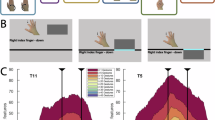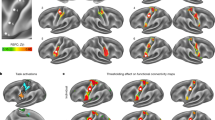Abstract
Recent studies in monkeys showed that when the direct cortico-motoneuronal connection was transected at mid-cervical segments, remaining, indirect cortico-motoneuronal pathways compensated for finger dexterity within one to three months. To elucidate the changes in dynamic properties of neural circuits during the recovery, we investigated the cortico-muscular and inter-muscular couplings of activities throughout the recovery course. Activities of antagonist muscle pairs showed co-activation during the second postoperative week, and oscillated coherently at frequencies of 30-46 Hz (gamma-band) by one month postoperatively. Such gamma-band inter-muscular coherence was not observed preoperatively, but became prominent and distributed widely over proximal and distal muscles with the recovery. Neither the gamma-band cortico-muscular coupling (14-30 Hz) observed before lesion, nor a gamma-band oscillation was observed in bilateral motor cortex after lesion. Thus, we propose that an unknown, subcortical oscillator, independent of cortical oscillation, commonly recruits hand/arm muscles and may underlie functional recovery of dexterous finger movements.
Similar content being viewed by others
Article PDF
Author information
Authors and Affiliations
Corresponding authors
Rights and permissions
About this article
Cite this article
Nishimura, Y., Morichika, Y. & Isa, T. A common subcortical oscillatory network contributes to recovery after spinal cord injury. Nat Prec (2008). https://doi.org/10.1038/npre.2008.1937.1
Received:
Accepted:
Published:
DOI: https://doi.org/10.1038/npre.2008.1937.1



